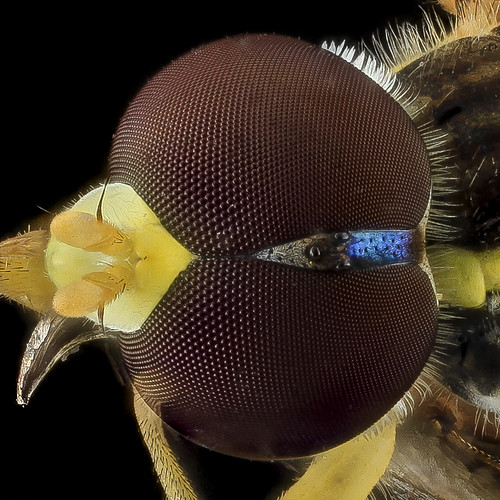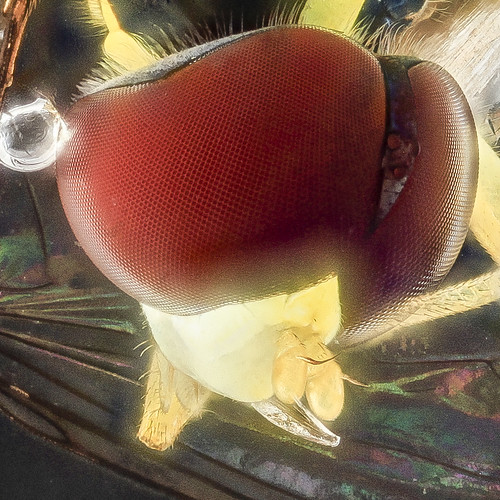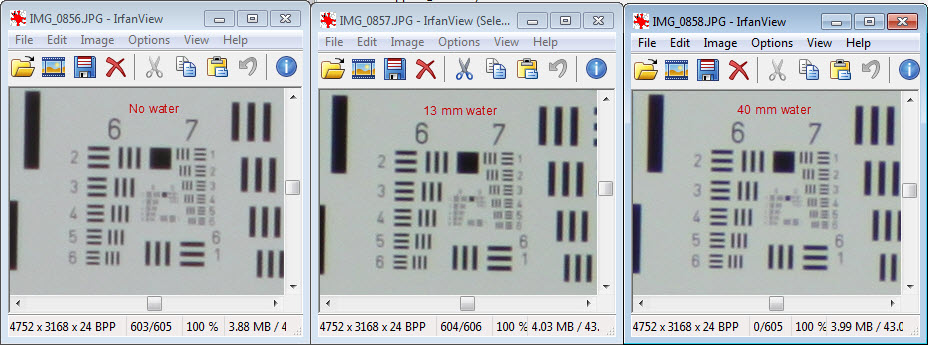We have been playing around with taking photos of insects floating in hand sanitizer inside of glass or plastic cuvettes. See our Flickr set at:
http://www.flickr.com/photos/usgsbiml/s ... 861396270/
This works reasonably well (and the way to go for soft-bodied things) except that we lose a small but noticeable amount of resolution compared to shooting the specimen in the air.
"Fresh Mosquito Pupae lighter_2013-09-15-17.20.03 ZS PMax by Sam Droege, on Flickr"

Below is an example of a specimen in air
"Fly in air test3x detail by Sam Droege, on Flickr

And the same specimen in alcohol in a cuvette
"fly in quartz 3 x detail by Sam Droege, on Flickr"

Not great shots but done just to illustrate the point.
OK, after a lot of talking and reading it turns out that the loss of resolution here is unavoidable because of the different refractive indices of air/glass/Hand Sanitizer and that without some sort of corrective lens it will remain so.
So I looked into the world of underwater photography, and they use acrylic dome ports to correct for the same problem. Except that the person I talked with said that the nearest the specimen can be is 9 inches from the nodal point of the camera which means I can't quite get the degree of magnification I would like. Additionally they thought that the dome acrylic would craze with any extended contact with alcohol and, yes, the dome has to be submersed in the alcohol, which creates logistical issues too.
There does not seem to be a screw on corrective lens to correct for this problem that I can find.
So, am looking for any additional ideas, while not a lot of people would buy such a thing I think that there would be a small market as many of us science guys need to take pictures of things in alcohol or at least water.
Thoughts?
sam


